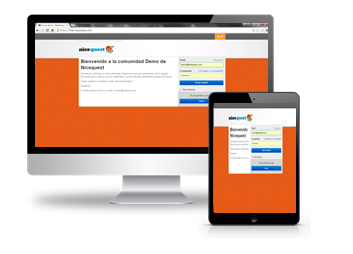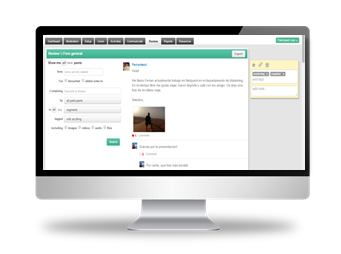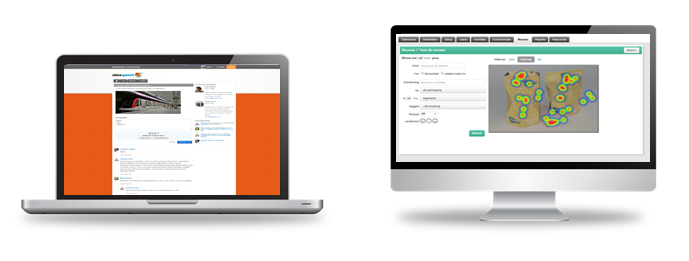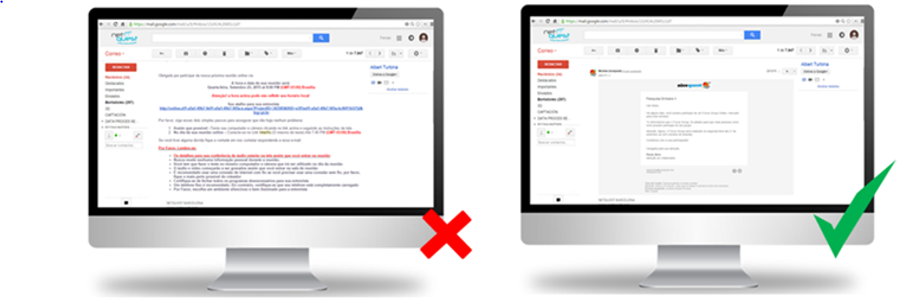Of the three articles we are going to write on Research Online Communities, we have focused the first on the technology needed to carry out projects of this kind.
We recall that market researchers have the duty always to take note of technological change to be able to develop new methodologies and achieve better insights for our clients. Technological change can involve process improvements (being more efficient), data quality improvements, or even the creation of completely new methodologies.
Research Online Communities are not new, but their use nowadays is clearly growing, largely due to improvements in the technology used.
Online community technology is included within what is known as social software. Social software is a set of computer programs promoting the integration of people and information to promote collaborative work between users. With the advances of the last decade in web 2.0 and social media, there has been a real revolution in the use of social software.
The mass use of social software is not limited to social networks: it has strongly infiltrated business management and the information society.
Any social software must:
- Allow its users to create, communicate, collaborate, share and learn.
- Allow the grouping of members.
- Be available on a web interface (including mobile phones)
Whatever the area of application, social software technology must make it possible to listen to members’ natural dialogue.
What is the ideal technology for a research online community?
We can use social media to collect unique data that would not be obtained with any other existing technique, but to do that we need technology designed exclusively for research.
This technology is an asynchronous participation tool; in other words, the participants do not have to be connected at the same time to carry out the activities. These are therefore not platforms designed for focus groups, chats or in-depth interviews.
We will now set out the three core technological areas that any research online community platform must take into account.
- Social network technology
Any online community technology must have features similar to those currently most commonly used on the social networks.
The community platform must be device agnostic: it must be possible to use it on any device. In addition, the software must not be intrusive. In other words, access to the community must be via e-mail or the panel’s mobile app, without the need to download any software.
The platform must have social tools allowing users to follow people, share opinion statuses, upload multimedia files directly from the device or mobile phone camera, mark comments as favourites, receive notifications, etc.
In conclusion, we recall that projects are global and we need technology designed to have quality multilingual systems.
- Research technology
As we have already seen, research online community must have aspects that are similar to those of social networks, although they are not absolutely identical to them, and their technology must be adapted to market research needs. We will now review the technical aspects necessary to be able to speak of a research community.
The first of the technical aspects to be taken into account concern security and privacy. These two elements must be present to ensure the future of our sector and sincere participation in any project. It is essential that an online community platform must be certified with ISO 27001.
Quality technical assistance is required. A well-structured and defined support channel allowing a rapid response is absolutely essential.
Unlike social networks, in a research platform the moderator might be interested in hiding others’ comments from a person who has not yet taken part in a particular activity. This technical action, which must be available in any community, is known as activation and not bias control.
There is also a very interesting technical option known as tags or segments. It is very useful for the moderator to be able to mark comments with a tag to be able to find comments more quickly and easily. A common tag might be “influential”, “follower”, “presentation material”, etc. By contrast, segmentation is useful for being able to generate reports, monitor shares or launch an activity with just one specific segment.
Focusing on usability for the moderator, it is essential to evaluate the community dashboard. The digital platform should have a space intended for overall project management. It must be a control panel so the researcher can quickly see the response rate for each activity, the people who have entered during the past day, the number of activities created, the tags used, the recent posts, etc. If a platform has no dashboard it cannot be used as a research tool.
Still from the moderator’s point of view, the technology must have a section intended for the creation of content filters so that thematic exports into Word or Excel can be made and it must allow the downloading of all multimedia files that participants have been able to share.
To conclude the research technology theme, we will comment on the essential part: the activities. The activities the platform allows will make the difference between one technology and another. The platform must at least have options for a blog, discussion boards, simple surveys, the creation of books of images and activities making it possible to evaluate images collectively.
- Technology for relations with participants
As we will see in the second article, the participant is the key point for the success of a research project. For this reason, communication tools, usability and design are basic and must be well developed.
One option which must indisputably be included is a tool offering communication with participants individually, collectively, in segments and with people who have or have not carried out certain activities.
To conclude, we would like to end by recalling that the environment is essential for ensuring good participation. The platforms must be designed with an appearance the participants are used to. For this reason, the Netquest platform has the look and feel of our brand of panel. The participants always feel that they are in a known, safe environment.
---
We hope this advice can be used to carry out a proper evaluation of the technological part of a research online community platform. However, as we will see in future posts, recruitment and the way participants are treated play a role that is equally or even more important for achieving success in a project of this kind.








